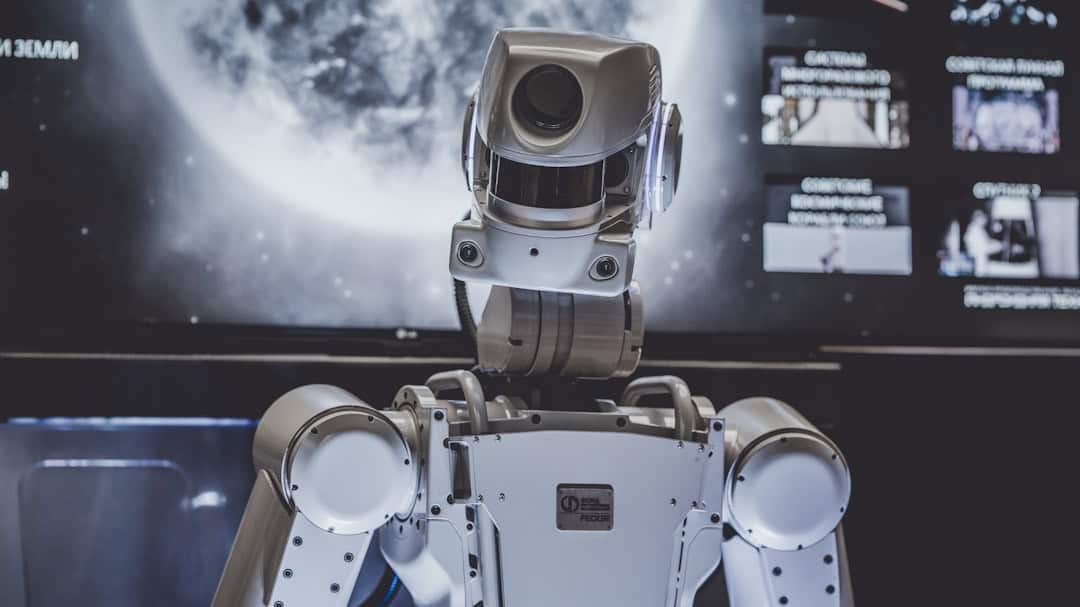The concept of the metaverse has gained significant attention in recent years, referring to a collective virtual shared space created by the convergence of virtually enhanced physical reality and physically persistent virtual reality. This digital environment allows users to interact with computer-generated surroundings and other participants. While not a new idea, recent technological advancements have made the metaverse more accessible and immersive than ever before.
The rise of virtual reality (VR) and augmented reality (AR) technologies has propelled the metaverse to the forefront of the tech industry, with companies and developers exploring its potential applications across various sectors. The metaverse has the potential to transform numerous aspects of daily life, including work, socialization, education, and commerce. It offers a novel approach to human connection and interaction, transcending geographical limitations and fostering new opportunities for collaboration and innovation.
As the metaverse continues to evolve, it is crucial for businesses and individuals to comprehend its potential impact and investigate ways to leverage this technology to enhance their operations and experiences. Key applications of the metaverse include virtual office spaces, events and conferences, training and development programs, product showrooms and retail spaces, and customer service and support. Additionally, the importance of data privacy and security in the metaverse cannot be overstated, as these factors will play a critical role in its widespread adoption and success.
Key Takeaways
- The Metaverse is a virtual reality space where users can interact with a computer-generated environment and other users.
- Virtual office spaces and collaboration tools in the Metaverse offer new ways for teams to work together and communicate.
- Virtual events and conferences in the Metaverse provide opportunities for immersive and interactive experiences for attendees.
- Virtual training and development programs in the Metaverse offer innovative ways for learning and skill development.
- Virtual product showrooms and retail spaces in the Metaverse provide a new way for consumers to explore and interact with products.
- Virtual customer service and support in the Metaverse offer new channels for businesses to engage with their customers.
- Data privacy and security in the Metaverse is a critical concern that needs to be addressed to ensure user safety and protection of personal information.
Virtual Office Spaces and Collaboration Tools
Seamless Communication and Collaboration in Virtual Environments
The metaverse offers a solution to the challenge of remote work and distributed teams by providing immersive virtual environments where team members can come together to work on projects, hold meetings, and brainstorm ideas in real-time. These virtual office spaces can be customized to mimic physical office layouts, complete with meeting rooms, workstations, and common areas, creating a sense of presence and connection that is often lacking in traditional remote work setups.
Enhancing Productivity and Creativity with Collaboration Tools
In addition to virtual office spaces, the metaverse also offers a wide range of collaboration tools that can enhance productivity and creativity. For example, virtual whiteboards and 3D modeling tools can enable teams to visualize and iterate on ideas in real-time, while spatial audio technology can create a more natural and immersive communication experience.
Redefining the Way We Work
These tools can help bridge the gap between physical and virtual interactions, making it easier for teams to collaborate effectively regardless of their physical location. Overall, virtual office spaces and collaboration tools in the metaverse have the potential to redefine the way we work, offering new possibilities for remote collaboration and innovation.
Virtual Events and Conferences

Another key application of the metaverse is in the realm of virtual events and conferences. With the ongoing shift towards digital experiences, many organizations are looking for ways to host engaging and interactive events that can reach a global audience. The metaverse offers a compelling solution to this challenge by providing immersive virtual environments where participants can come together to attend keynotes, network with other attendees, and explore interactive exhibits.
These virtual events can be accessed from anywhere in the world, breaking down geographical barriers and enabling a more inclusive and accessible experience for all participants. In addition to traditional conferences and trade shows, the metaverse also opens up new possibilities for hosting unique and interactive events that would be difficult or impossible to replicate in the physical world. For example, virtual reality concerts, art exhibitions, and product launches can offer a level of immersion and interactivity that is simply not possible in traditional event formats.
These virtual experiences can help organizations stand out from the crowd and create memorable experiences that leave a lasting impression on attendees. Overall, virtual events and conferences in the metaverse have the potential to redefine the way we gather and connect, offering new opportunities for engagement and interaction.
Virtual Training and Development Programs
The metaverse also holds great potential for transforming training and development programs across various industries. With the rise of remote work and distributed teams, organizations are looking for innovative ways to deliver effective training programs that can engage employees regardless of their physical location. The metaverse offers a solution to this challenge by providing immersive virtual environments where employees can participate in interactive training sessions, simulations, and role-playing exercises.
These virtual training programs can offer a level of engagement and interactivity that is often lacking in traditional e-learning platforms, making it easier for employees to retain information and apply new skills in real-world scenarios. In addition to traditional training programs, the metaverse also opens up new possibilities for delivering hands-on training experiences that would be difficult or impossible to replicate in the physical world. For example, virtual reality simulations can provide employees with realistic scenarios to practice their skills in a safe and controlled environment, such as medical procedures or equipment operation.
These immersive experiences can help employees build confidence and proficiency in their roles, ultimately leading to better performance and outcomes. Overall, virtual training and development programs in the metaverse have the potential to revolutionize the way we learn and grow, offering new opportunities for hands-on experiences and skill development.
Virtual Product Showrooms and Retail Spaces
The metaverse has the potential to revolutionize the way we shop and experience products through virtual product showrooms and retail spaces. With the rise of e-commerce and online shopping, many consumers are looking for more immersive and interactive ways to explore products before making a purchase. The metaverse offers a solution to this challenge by providing immersive virtual environments where consumers can browse products, interact with 3D models, and even try out virtual samples before making a purchase.
These virtual product showrooms can offer a level of engagement and interactivity that is often lacking in traditional online shopping experiences, making it easier for consumers to make informed purchasing decisions. In addition to traditional product showrooms, the metaverse also opens up new possibilities for creating unique and interactive retail experiences that would be difficult or impossible to replicate in the physical world. For example, virtual reality stores can offer consumers a fully immersive shopping experience where they can browse products in a 3D environment, interact with virtual sales assistants, and even try on virtual clothing or accessories.
These virtual retail experiences can help brands stand out from the competition and create memorable shopping experiences that drive customer loyalty and satisfaction. Overall, virtual product showrooms and retail spaces in the metaverse have the potential to redefine the way we shop and experience products, offering new opportunities for engagement and interaction.
Virtual Customer Service and Support

Immersive Virtual Environments
The metaverse offers a solution to this challenge by providing immersive virtual environments where customers can interact with virtual agents, explore self-service options, and participate in virtual support sessions. These virtual customer service experiences can offer a level of engagement and interactivity that is often lacking in traditional customer service channels, making it easier for customers to get the help they need in a timely manner.
New Possibilities for Support Experiences
In addition to traditional customer service channels, the metaverse opens up new possibilities for delivering unique and interactive support experiences that would be difficult or impossible to replicate in the physical world. For example, virtual reality support sessions can provide customers with personalized assistance in a fully immersive environment where they can visualize solutions and troubleshoot issues in real-time.
Revolutionizing Customer Engagement
These immersive support experiences can help organizations deliver more effective solutions while creating memorable interactions that drive customer satisfaction and loyalty. Overall, virtual customer service and support in the metaverse have the potential to revolutionize the way we engage with customers, offering new opportunities for personalized interactions and problem-solving.
Data Privacy and Security in the Metaverse
As the metaverse continues to evolve, it is important for businesses and individuals to consider the implications of data privacy and security in these immersive virtual environments. With the rise of digital interactions and personal data sharing, there is an increased risk of privacy breaches and security vulnerabilities that could compromise sensitive information. It is essential for organizations to prioritize data privacy and security measures when developing applications for the metaverse, ensuring that user data is protected from unauthorized access or misuse.
In addition to data privacy concerns, there is also a need for robust security measures to protect against potential threats such as cyber attacks or malicious activities within the metaverse. As more businesses and individuals engage with these immersive virtual environments, there is a growing need for secure authentication methods, encryption protocols, and monitoring tools to safeguard against potential risks. It is crucial for organizations to stay informed about best practices for data privacy and security in the metaverse, implementing proactive measures to mitigate risks and protect sensitive information.
In conclusion, the metaverse offers a wide range of exciting applications that have the potential to transform various aspects of our lives. From virtual office spaces and collaboration tools to virtual events and conferences, training programs, product showrooms, retail spaces, customer service experiences, as well as data privacy and security considerations – there are countless opportunities for businesses and individuals to leverage this technology for innovation and growth. As we continue to explore the potential of the metaverse, it is important to consider how we can harness its power while prioritizing data privacy and security measures to ensure a safe and responsible digital future.
If you’re interested in exploring the integration of physical and virtual spaces, you should check out the article “Metaverse and the Real World: Integrating Physical and Virtual Spaces.” This article delves into the concept of the metaverse and how it can bridge the gap between the real world and virtual reality. It provides insights into the potential impact of this integration on various industries and the way we interact with technology.
FAQs
What is the metaverse?
The metaverse is a collective virtual shared space, created by the convergence of virtually enhanced physical reality and physically persistent virtual reality.
What should the company part of the metaverse contain?
The company part of the metaverse should contain virtual offices, meeting spaces, product showrooms, customer service centers, and interactive experiences for employees and customers.
How can a company benefit from being part of the metaverse?
A company can benefit from being part of the metaverse by creating immersive and interactive experiences for employees and customers, increasing brand engagement, and exploring new business opportunities in a virtual environment.
What are some examples of companies already involved in the metaverse?
Some examples of companies already involved in the metaverse include virtual reality gaming companies, social media platforms with virtual reality features, and businesses using virtual reality for training and simulation purposes.
What are the potential challenges of entering the metaverse for a company?
Potential challenges of entering the metaverse for a company include technical barriers, privacy and security concerns, and the need to adapt to a new virtual environment for business operations.











Leave a Reply